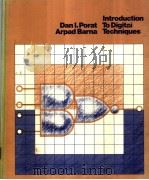《INTRODUCTION TO DIGITAL CONTROL SYSTEMS》
| 作者 | 编者 |
|---|---|
| 出版 | MACMILLAN PUBLISHING COMPANY |
| 参考页数 | 460 |
| 出版时间 | 1985(求助前请核对) 目录预览 |
| ISBN号 | 0024226106 — 求助条款 |
| PDF编号 | 812498418(仅供预览,未存储实际文件) |
| 求助格式 | 扫描PDF(若分多册发行,每次仅能受理1册) |
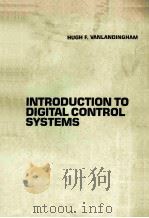
ⅠMODELING AND ANALYSIS OF DISCRETE-TIME SYSTEMS3
1INTRODUCTION TO DIGITAL CONTROL3
1.1 Basic system concepts and classification4
1.2 Feedback systems and digital control9
1.3 Sampling and reconstruction of signals12
1.4 Computer interfacing16
1.5 Discrete-time system response21
1.6 Convolution of sequences24
1.7 Linear difference equations26
1.8 Solved Problems30
1.9 Summary and references35
Problems35
2TRANSFORM ANALYSIS39
2.1 Introduction to z-transforms39
2.2 Basic z-transform properties45
2.3 Inverse transform techniques51
2.4 Pulse transfer functions59
2.5 Block diagrams and signal-flow graphs64
2.6 Response from z-domain functions71
2.7 A stability test for linear discrete-time systems77
2.8 Solved problems80
2.9 Summary and references88
Problems89
3STATE-VARIABLE ANALYSIS FOR DISCRETE-TIME SYSTEMS95
3.1 Introduction to discrete-time state variables96
3.2 State variables for continuous-time systems99
3.3 General solution for the continuous-time state model101
3.4 Discrete-time state models for sampled-data systems103
3.5 System response by recursion107
3.6 State models from difference equations109
3.7 Equivalent state models and multivariable systems116
3.8 Discrete-time system stability122
3.9 Solved problems127
3.10 Summary and references137
Problems138
4SYSTEM SIMULATION TECHNIQUES145
4.1 Machine calculation of the transition matrices146
4.2 Digital filter techniques150
4.3 Homogenous equivalent systems166
4.4 Discrete-time system simulation168
4.5 Simulation of digital control systems170
4.6 Solved problems176
4.7 Summary and references183
Problems184
5DIGITAL IMPLEMENTATION191
5.1 Digital quantization191
5.2 Sensitivity analysis194
5.3 Response of discrete-time systems to white noise196
5.4 Comparison of program realizations199
5.5 Microprocessor implementation202
5.6 Solved problems206
5.7 Summary and references211
Problems212
ⅡDESIGN TECHNIQUES FOR DISCRETE-TIME SYSTEMS219
6DESIGN IN THE Z-DOMAIN219
6.1 Second-order systemdesign219
6.2 Dominant second-order systems225
6.3 Design for steady-state error response227
6.4 Parameter design by the root-locus method231
6.5 Parameter sensitivity243
6.6 A second-order tracking filter245
6.7 Solved problems248
6.8 Summary and references257
Problems258
7CONTROLLABILITY AND STATE-VARIABLE FEEDBACK263
7.1 State controllability263
7.2 Minimum-norm solutions267
7.3 Open-loop regulation270
7.4 Design for deadbeat response273
7.5 Transformation to controllable form277
7.6 State-variable feedback design280
7.7 Solved problems285
7.8 Summary and references298
Problems299
8OBSERVABILITY AND STATE ESTIMATOR DESIGN307
8.1 State observability307
8.2 Transformation to observable form310
8.3 State estimator design313
8.4 The separation principle323
8.5 Output feedback controller design325
8.6 Duality328
8.7 Solved problems330
8.8 Summary and references341
Problems342
9INTRODUCTION TO OPTIMAL CONTROL347
9.1 Quadratic cost functionals347
9.2 Optimal regulation349
9.3 Solution by dynamic programming351
9.4 Root-square locus356
9.5 Set-point control359
9.6 Optimal stochastic control363
9.7 Solved problems371
9.8 Summary and references382
Problems383
APPENDICES393
ALaplace Transforms393
B Matrix Algebra405
C Discrete-Time Random Signals414
D Basic Language Programs421
ANSWERS TO SELECTED PROBLEMS447
INDEX455
1985《INTRODUCTION TO DIGITAL CONTROL SYSTEMS》由于是年代较久的资料都绝版了,几乎不可能购买到实物。如果大家为了学习确实需要,可向博主求助其电子版PDF文件(由 1985 MACMILLAN PUBLISHING COMPANY 出版的版本) 。对合法合规的求助,我会当即受理并将下载地址发送给你。
高度相关资料
-
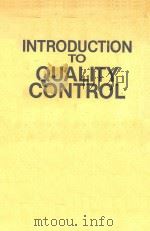
- INTRODUCTION TO QUALITY CONTROL
- 1990 CHAPMAN & HALL
-

- DIGITAL CONTROL OF DYNAMIC SYSTEMS SECOND EDITION
- 1990 ADDISON-WESLEY PUBLISHING COMPANY
-

- INTRODUCTION TO DIGITAL BOARD TESTING
- 1982 CRANE RUSSAK
-

- INTRODUCTION TO DIGITAL ELECTRONICS
- 1967 ADDISON-WESLEY PUBLISHING COMPANY
-
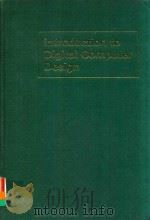
- INTRODUCTION TO DIGITAL COMPUTER DESIGN
- 1972 MC GRAW HILL
-

- AN INTRODUCTION TO DIGITAL MEDIA
- 1997 A LLIEPRINT BOOK
-
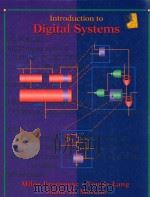
- INTRODUCTION TO DIGITAL SYSTEMS
- 1999 JOHN WILEY & SONS INC
-

- Direct digital control systems application·commissioning
- 1999 Kluwer Academic Publishers
-
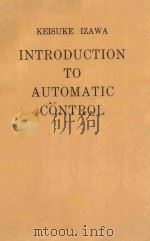
- INTRODUCTION TO ATUOMATIC CONTROL
- 1963 ELSEVIER PUBLISHING COMPANY
-

- Introduction to Digital Libraries
- Facet Publishing
-

- INTRODUCTION TO DIGITAL COMMUNICATIONS
- PEARSON PRENTICE HALL
提示:百度云已更名为百度网盘(百度盘),天翼云盘、微盘下载地址……暂未提供。➥ PDF文字可复制化或转WORD


